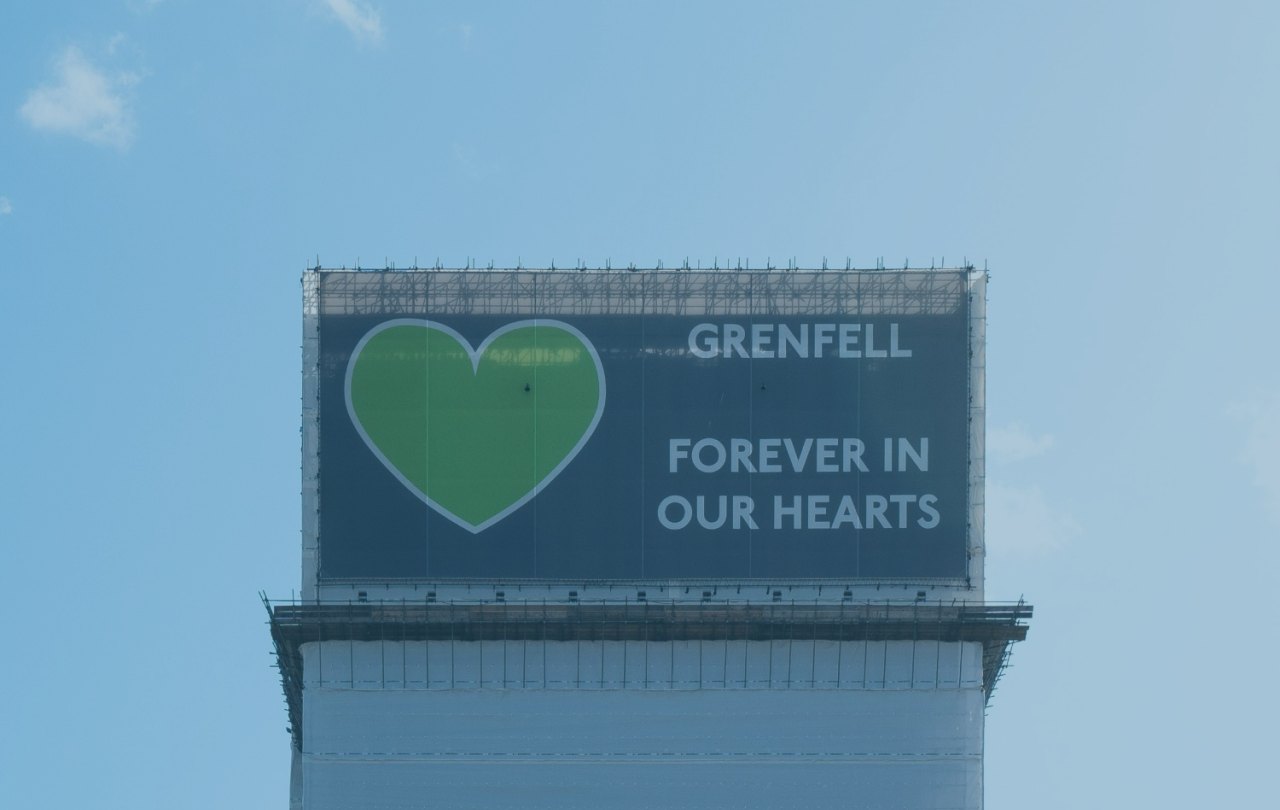
It is now six years since an electrical fault in a fridge in the kitchen of a fourth floor flat led to the fire in Grenfell Tower which killed 72 people – the worst loss of life in one single incident in London since the second world war. The rest of the country has understandably moved on, preoccupied by the COVID years, a cost of living crisis and the sheer pace of life, so that Grenfell has retreated to the back of our consciousness and conscience, yet for the bereaved and survivors, who live with the memory every day, these have been six very long years.
We are told the Public Inquiry will report early in 2024, so there is still more time to wait. Meanwhile, the remains of the creaking tower still stand by the Westway in north Kensington.
Whenever I speak to people about Grenfell, the most common question is ‘what is going to happen to the Tower?’
Yet there is the nagging fear from bereaved families and campaigners that once it is demolished, they, and their loved ones will be forgotten: ‘out of sight, out of mind.’
The Tower left to its own devices would probably have fallen long ago. A damaged building like this gradually degrades over time, with the effects of gravity, weather, water seeping into the cracks which ice up in winter, leading to widening of those cracks, concrete falls and so on. As a result, there are over 4,500 props inserted into the building, keeping the creaking infrastructure standing. A large team monitors the building constantly, and it is relatively secure for the next decade if need be, despite the ongoing cost of the operation. The Tower continues to be covered with two linings of white wrapping plastic – an inner one which remains and an outer one that is replaced every year. Some local people would want to see the building come down as it remains a constant painful memory. Yet there is the nagging fear from bereaved families and campaigners that once it is demolished, they, and their loved ones will be forgotten: ‘out of sight, out of mind.’ The ongoing presence of the building, standing alone by the Westway as a constant reminder to the thousands who travel into London each day, is one of the only ways they have to keep the memory alive.
So, looking into the future, what will the legacy of Grenfell be? Convictions of those found to be culpable may well follow and rightly so, if individuals or companies can be clearly identified as having deliberately acted in underhand ways that led to the installation of the highly flammable cladding, or carelessly caused this disaster.
Some people call Grenfell a crime. Some a tragedy. Perhaps both are right. So what do you do when a crime, or a tragedy occurs? What do we do as a society?
Grenfell was not an accident. As I said in my sermon at the fifth anniversary commemoration in Westminster Abbey a year ago, Grenfell “was not an unfortunate accident – it was the result of careless decisions taken, regulations ignored, an industry that seemed at times more interested in making profits and selling products than in the precious value of human life and keeping people safe in their own homes.” In Christian language, Grenfell was the result of sin.
When you recognise you have sinned, the way to begin to put things right is to repent. ‘Repent’ is a strong word, yet it talks about turning and going in a different direction. You recognise that you have done something wrong and you need to put it right. The last six years have revealed a pattern of cutting corners, deception and lack of care in the regulation of building safety. It has also revealed flaws in our housing stock. The government’s Levelling Up Bill gives some protection to those living in insecure blocks of flats, but does not yet protect innocent leaseholders from all the costs of remedying safety faults for which they were not responsible. Some leaseholders are in the fortunate position of having their developers agreeing to foot the bill to make things safe, but others aren’t, and are still facing high insurance premiums, remediation costs and are still waiting to see who will pay, how much will be covered and when.
The Earl of Lytton’s amendment to the bill offers protection to leaseholders by ensuring those responsible for safety defects at the time of construction pay up, or if the company no longer exists. The costs are covered by an industry levy, of money raised from those who have profited from cutting corners in the past, those on whom the Public Inquiry has shone an uncomfortable light. Passing an amendment such as this, that protects vulnerable leaseholders and places the costs on those responsible for them would be a fitting way to enact repentance, to ensure Grenfell is not repeated.
With a tragedy, however, you remember. The Grenfell Memorial Commission continues to meet and work on this very task. Conversations with the community continue and the desire is for a memorial that is peaceful, reflective, positive and respectful. A design team is to be chosen in the coming 12 months, with a view to a final plan being chosen by the end of 2024. The planning process and the building of whatever form of memorial is chosen will then start in 2025, to be finished some time later.
All this will take time and a further thing required beyond repentance and remembering - patience. A visit to the 9/11 memorial in New York recently reminded me how a memorial can help process and manage the pain of remembered tragedy and trauma. The site is comprehensive, respectful, dignified and unforgettable. The 9/11 memorial opened 10 years after the attacks, and the Museum, offering a detailed moment by moment account of the day and what led up to it, opened in 2014, 13 years after the event.
Remembering and repentance takes time and need to be done well. Repentance needs to be thoroughly thought through and enacted wisely. Remembering needs to emerge from deep reflection on what has happened and finding creative ways to being something positive and even beautiful out of tragedy. Neither need to be hurried, otherwise they will be done in a shoddy and off-hand way, which disrespects the memory of those who died.
For many, Grenfell may have dropped out of public consciousness. Yet societies, like people, are defined by the way they learn from mistakes and tragedies. Comprehensive building safety legislation and a dignified memorial that keeps the memory of Grenfell and those who died there alive for years to come will be the best legacy for Grenfell, even though it will take time. We are not there yet, but that future is worth waiting for.





